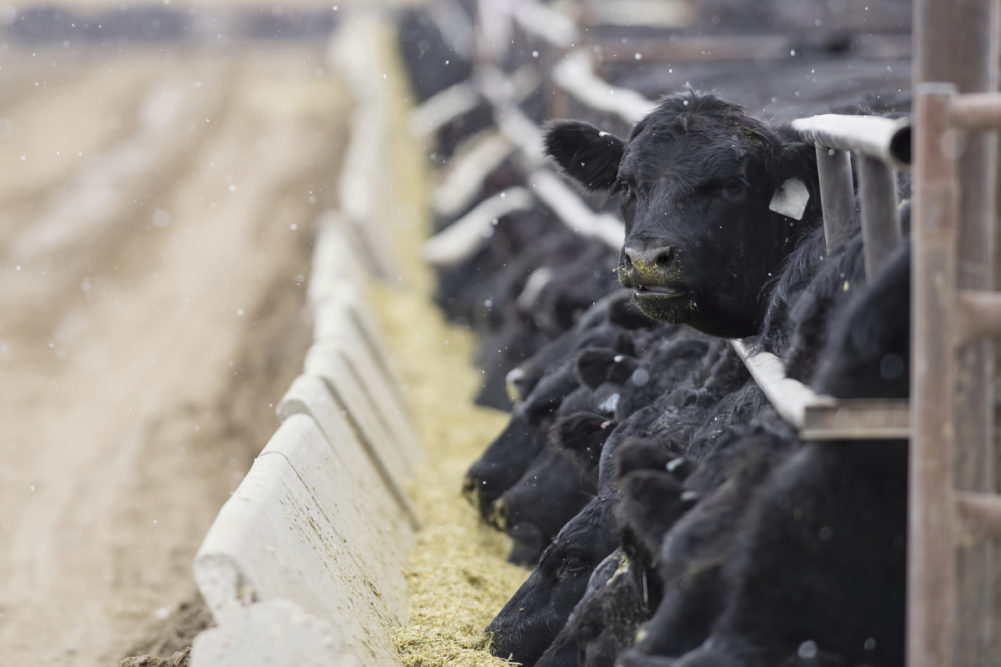ARLINGTON, VIRGINIA, US — Strong demand for animal food in 2019 was seen with 283.8 million tons produced, according to a report commissioned by the Institute for Feed Education and Research (IFEEDER).
Decision Innovation Solutions (DIS), the economic and analysis firm that performed the study, found that of the total amount of animal food produced in 2019 the top three animal food consumers included beef cattle at 64.5 million tons, hogs at 61.8 million tons and broiler chickens at 60.8 million tons.
The top five US states for animal food consumed in 2019 included:
- Iowa, 28.8 million tons
- Texas, 21.1 million tons
- California, 17.5 million tons
- North Carolina, 16.3 million tons
- Minnesota, 14.6 million tons
For the first time since the report was published in 2017, the study measured the top states for harvested forage consumption as part of animal diets, showing Texas at 32.3 million tons, California at 30.6 million tons, Wisconsin at 21.6 million tons, Kansas at 16.9 million tons and Nebraska at 16.1 million tons.
“Corn, the most abundantly produced crop in the United States, made up slightly more than half (52%) of the total amount of compounded feed consumed and when combined with soybean meal (12%) and dried distillers’ grains with solubles (DDGs) (11%), represented more than 75% of all feed tonnage consumed in 2019,” the report said.
Other ingredients in animal diets included:
- wheat middlings and wheat bran (3%)
- animal byproduct meals (3%)
- corn gluten feed/meal (2%)
- canola meal (2%)
- animal fats (2%)
- other processed plant byproducts (1%)
The DIS report forecasts a slight decline in 2020 due to COVID-19.
DIS estimated the baseline consumption at the beginning of 2020 at 252.6 million tons (excluding forages and roughages), under normal production circumstances without the effects of the pandemic.
With COVID-19, the projected consumption rate fell 1.7% to roughly 248.4 million tons, a difference of 4.2 million tons less feed consumed worth $1.6 billion, leaving the industry with a total post-COVID-19 value of $47.5 billion, report said.
“The demand for animal food is strong and continues to grow, despite the COVID-19 pandemic,” said Robert Cooper, executive director of IFEEDER. “While we may feel some of the short-term economic repercussions and disruptions to the food chain from the coronavirus pandemic, our industry is resilient and well-positioned to continue supporting America’s food and pet food supply for the future.”
The report also provided a five-year outlook on how COVID-19 may potentially impact the animal food industry’s growth.
The worst-case scenario where the feed industry continues to experience disruptions in processing and slaughter along with potential trade issues, forecasting a further animal food production decrease of 4.5% to 237.2 million tons in 2025.
The expected-case outcome is forecast to produce an increase of 2.5% to 254.6 million tons of animal food production in 2025 if it continues business as usual without any further major disruptions.
Lastly, the best-case scenario includes the hotel, retail and institutions, travel and trade conditions recover and improve, DIS estimated that by 2025 feed production could increase 5.9% to 263.1 million tons.
“This report demonstrates that supporting our essential agricultural workforce with better access to COVID-19 prevention tools, testing and vaccines in rural America will have a positive impact on our long-term economic growth and contribution to local economies,” said Constance Cullman, president and chief executive officer of the American Feed Industry Association. “Our industry has responded and adapted very well to the new way of safely operating during the crisis and our local and state policy leaders can show their support by continuing to prioritize these workers in their vaccine rollouts and COVID response plans.”




